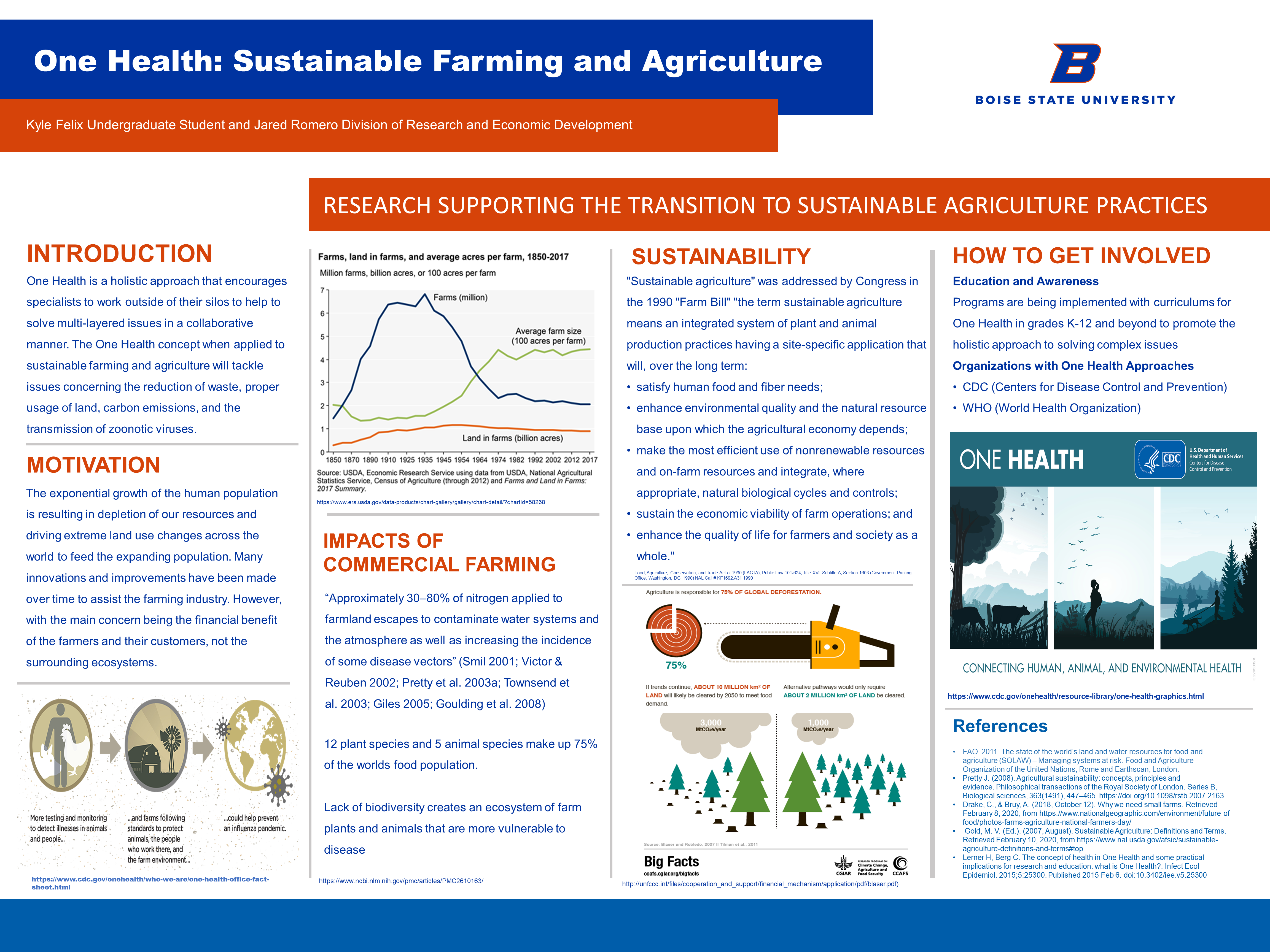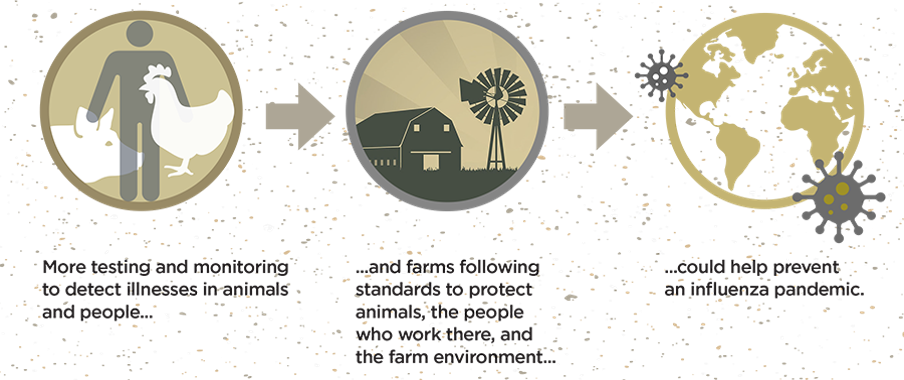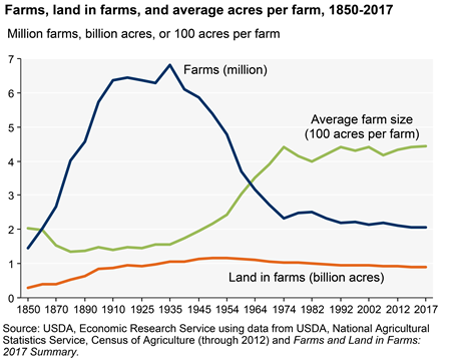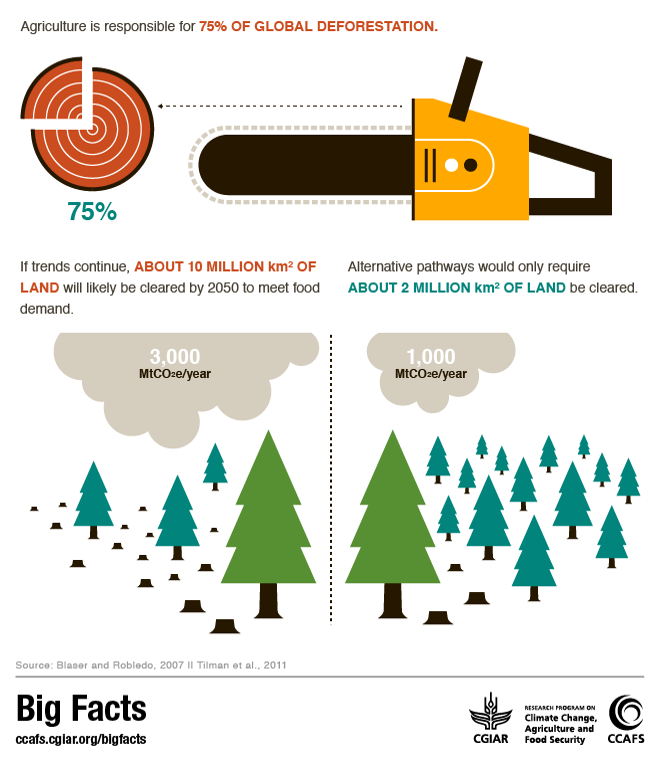Kyle Felix, Dr. Jared Romero

Introduction
One Health is a holistic approach that encourages specialists to work outside of their silos to help to solve multi-layered issues in a collaborative manner. The One Health concept when applied to sustainable farming and agriculture will tackle issues concerning the reduction of waste, proper usage of land, carbon emissions, and the transmission of zoonotic viruses.
Motivation
The exponential growth of the human population is resulting in depletion of our resources and driving extreme land use changes across the world to feed the expanding population. Many innovations and improvements have been made over time to assist the farming industry. However, with the main concern being the financial benefit of the farmers and their customers, not the surrounding ecosystems.

Impacts of Commercial Farming

“Approximately 30–80% of nitrogen applied to farmland escapes to contaminate water systems and the atmosphere as well as increasing the incidence of some disease vectors” (Smil 2001; Victor & Reuben 2002; Pretty et al. 2003a; Townsend et al. 2003; Giles 2005; Goulding et al. 2008)
12 plant species and 5 animal species make up 75% of the worlds food population.
Lack of biodiversity creates an ecosystem of farm plants and animals that are more vulnerable to disease

Sustainability
“Sustainable agriculture” was addressed by Congress in the 1990 “Farm Bill” “the term sustainable agriculture means an integrated system of plant and animal production practices having a site-specific application that will, over the long term:
- satisfy human food and fiber needs;
- enhance environmental quality and the natural resource base upon which the agricultural economy depends;
- make the most efficient use of nonrenewable resources and on-farm resources and integrate, where appropriate, natural biological cycles and controls;
- sustain the economic viability of farm operations; and
- enhance the quality of life for farmers and society as a whole.”
How to Get Involved
Education and Awareness
Programs are being implemented with curriculums for One Health in grades K-12 and beyond to promote the holistic approach to solving complex issues
Organizations with One Health Approaches
- CDC (Centers for Disease Control and Prevention)
- WHO (World Health Organization)
References
Additional Information
For questions or comments about this research, contact Kyle Felix at kylefelix@u.boisestate.edu.